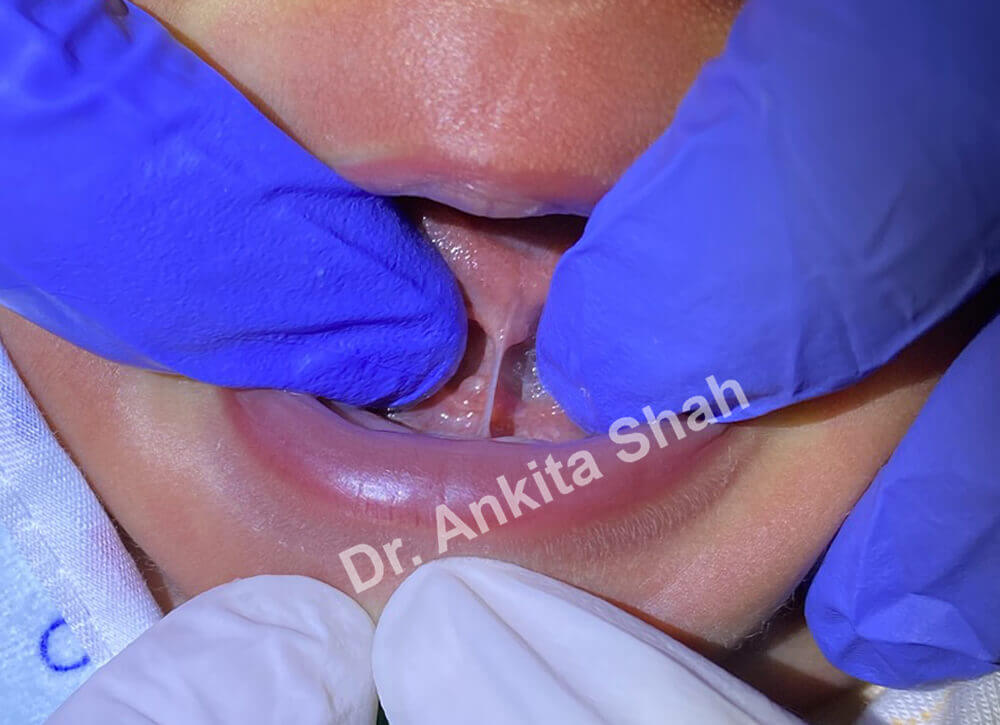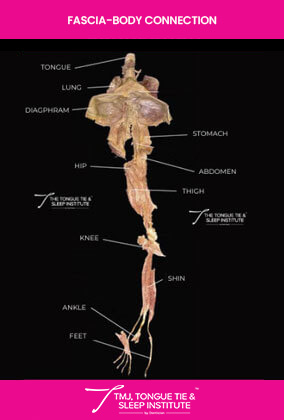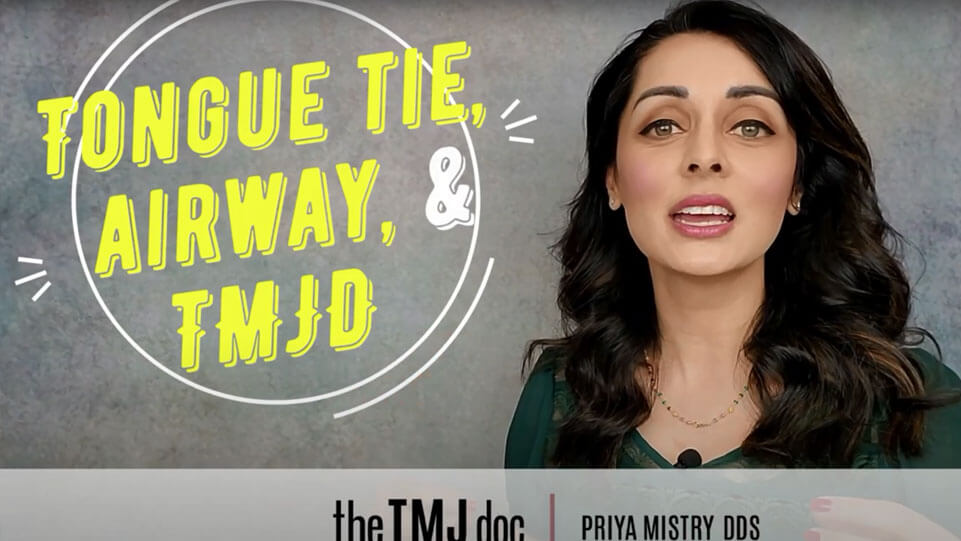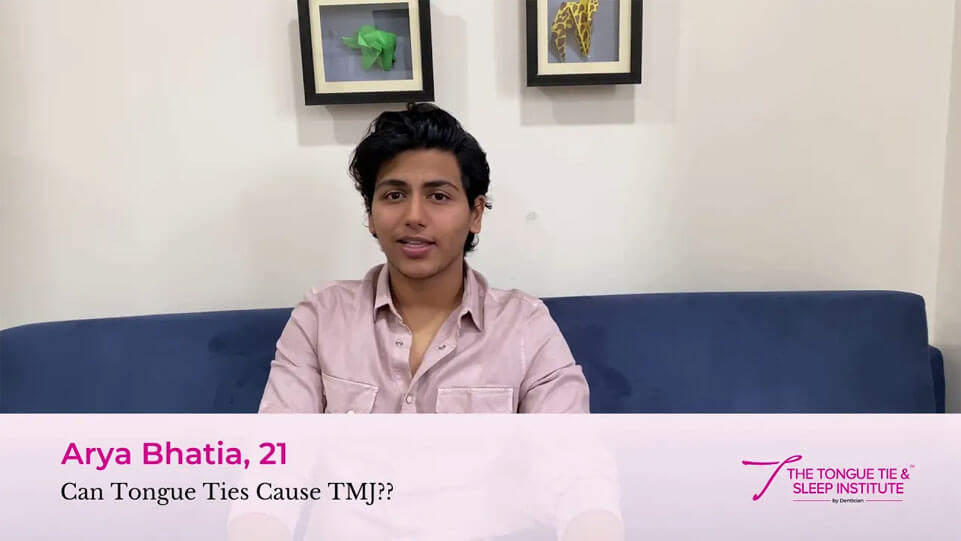Tongue Ties & TMD “Ankyloglossia”
Ever wondered that the tongue could be one of the most important muscles that controls our various functions in our body?
The tongue consists of 8 muscles. It is attached to a floating bone called the hyoid bone. This bone is further attached to the muscles of head, face and neck (often called the strap muscles). All these muscles are very important for the complete act of swallowing and maintaining posture of neck and shoulders. They also play an important role in diaphragmatic breathing. Surprised to know that?
What is a Tongue Tie?
“Ankyloglossia” commonly referred to as a tongue tie is a string of tissue, called the frenulum, that can restricts tongue movements if it is thicker and shorter than usual. Tongue can be anterior as well as posterior. There are different grades of fascial restriction and tongue functionality that are essential for breastfeeding, sucking, swallowing, eating, drinking, chewing, breathing, speech, jaw growth, posture and digestion.

How does a Tongue Tie Cause TMD?
When there is a tongue tie, some of the muscles are typically tight, pulling on the tongue when it attempts to function, but cannot because it is anchored to the floor of the mouth. This restricts the tongue from normal movement and function. The movements of the ‘tied’ tongue are then accompanied by many compensations like unfavorable movements of the TMJ, lower jaw, tension in the floor of the mouth, neck, face and head.
The tongue performs many functions including keeping the airway open (in compensation to which one starts mouthbreathing, snoring, clenching and grinding their teeth), assisting with chewing, swallowing, and most importantly facial and jaw development, speech and digestion. An open mouth, incorrect bite, clenching and grinding or constant compensations of the muscles while swallowing and speaking can result in Orofacial pain and TMJ dysfunction.
How is the Tongue Connected To Our Body?
Your tongue is such a crucial part of your body. This may surprise you! “The anterior deep fascial line starts from beneath the tongue and goes till the lungs to the pelvic bones down to the arches of your feet.” This means there is a direct connection between the orofacial function-tongue function – diaphragmatic breathing – cervical posture. Let’s understand the compensations of a tongue tie: fascial restrictions, tension and pain. The neuromuscular system is intertwined with the brain, digestive system, neck, spine, and teeth.
Headaches, shoulder and neck pain commonly attributed to TMD or clenching or bruxing, has been relieved by releasing untreated tongue-tie. The ‘tied’ tongue can be a cause of sleep-disordered breathing, leading to bruxing, as well as pain in the neck or upper back. Some adults also experience digestive and reflux problems, tightness in the chest, bow feet, tingling in calves and feet.

Diagnosing A Tongue Tie
There are also several related issues stem from a tongue restriction that include the airway, posture, and sleep. Tongue-tie may be found when looking for causes of a TMD/ orofacial pain, clenching of teeth, disturbed sleep and breathing and poorly developed jaw growth and teeth alignment. A tongue tie cannot be self-diagnosed since a comprehensive functional assessment of the tongue is essential.
Hence, it is best to let a specialist who specifically trained to identify Tongue Ties, diagnose you.
Treating a Tongue Tie
In our practice we use the Functional Frenuloplasty procedure to release tongue ties for toddlers, children and adults. This approach has been adapted from Dr. Soroush Zaghi of The Breathe Institute, Los Angeles who is a globally renowned ENT & sleep surgeon who has established this functional approach to tongue ties.
The success of our practice is based on our ability to provide a complete and effective release of tethered oral tissues by incorporating a multidisciplinary protocol that integrates myofunctional therapy (and sometimes physical therapy) both before, during, and after surgery. Our tongue-tie release procedure is based on precision: releasing the appropriate extent of tissues for maximal relief; not too much, and not too little. Additionally, at Dentician we also do understand that TMJ patients require special care when opening their mouths for prolonged periods of time and have adapted the procedure to ensure minimal discomfort.
Tongue Tie Release for AdultsFunctional Frenuloplasty
Undergoing Oral Motor Rehabilitation and Physical Therapy after your procedure is crucial to maintain the released fascia and make sure the body and tongue can be re-trained on how to remain this muscle- balance -posture. Our patients have also reported less TMJ pain after Myofunctional Therapy for their tongue ties.
Our Non-Invasive Solutions for TMJ Disorder & Jaw Pain:
Blogs

























